How to fertilize potatoes – experts reveal the secrets to strong crops and big yields
Discover when to feed potatoes and the best fertilizers to use
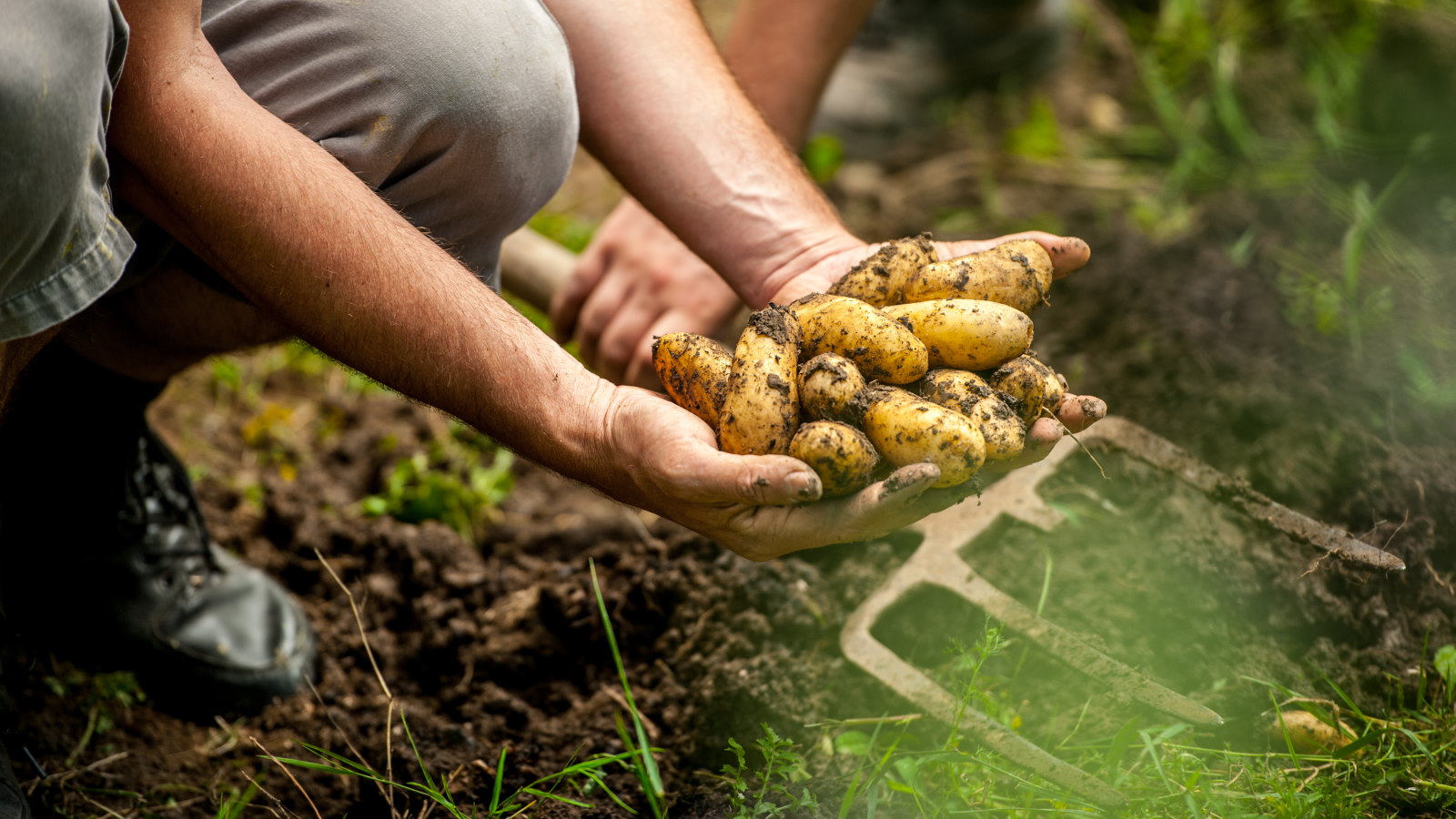

Potatoes are a hungry crop that needs lots of nutrients throughout the growing season. A failure to fertilize potatoes properly is a common issue among growers, and it impacts any potential harvest.
A proper feeding regime is easy to establish and regularly applying a feed high in phosphorus and potassium will ensure you get the biggest and best tubers.
Growing potatoes is a fairly simple process and there is such a wide selection of potatoes to choose from. You want the biggest crop possible for your efforts, which is boosted by planning when and how to fertilize potatoes.
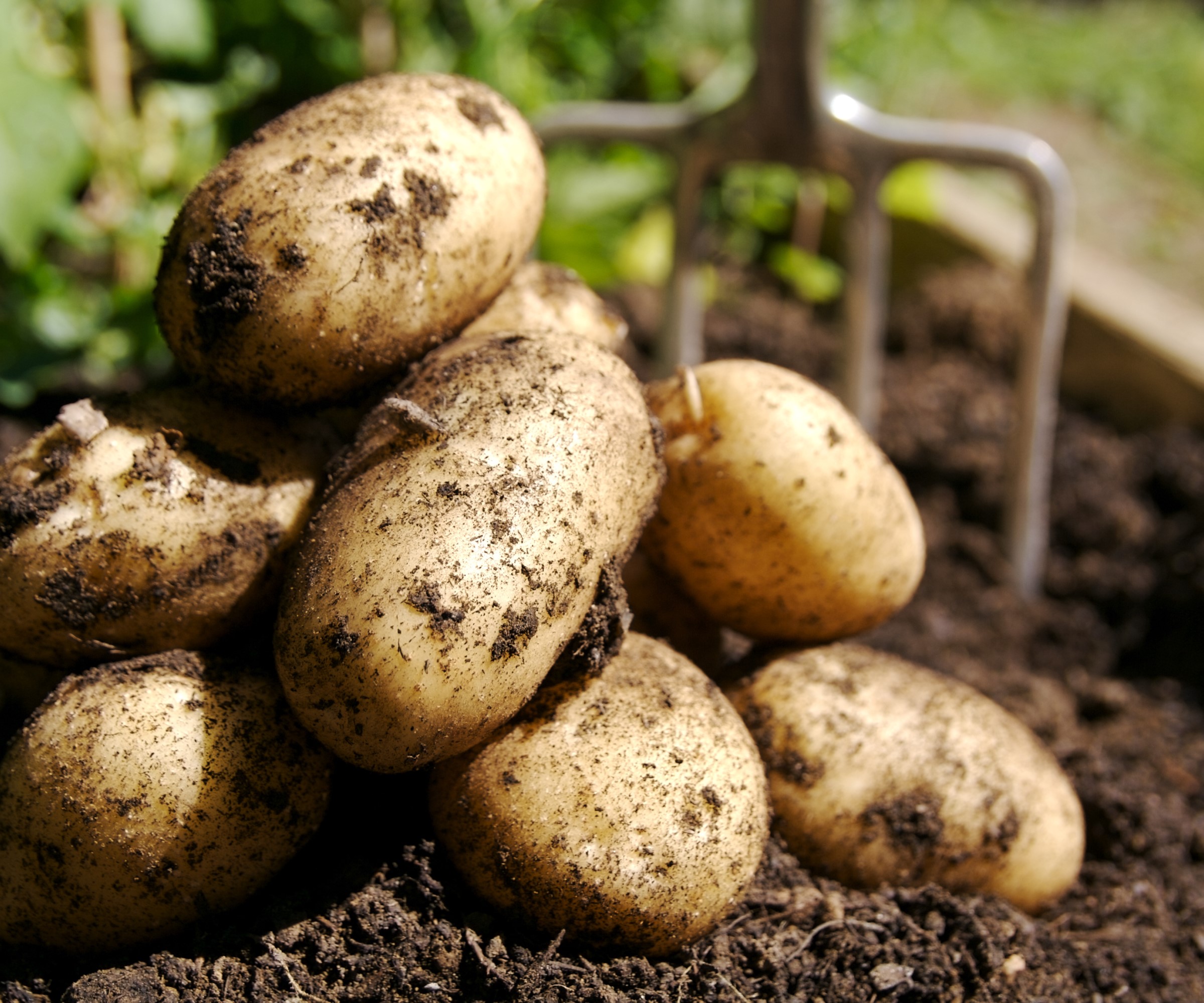
Potatoes are a hungry crop that requires lots of water and nutrients to grow
Why is it important to fertilize potatoes?
All plants need the three key nutrients of nitrogen, phosphorus, and potassium for healthy growth. These nutrients are referred to as NPK and shown on labels as three plant fertilizer numbers. You will see these numbers separated by dashes that refer to the make-up of NPK, eg. 10-10-10.
Mark V Wessel, Director of Horticulture Research for Gardens Alive, hails fertilizing potatoes as an essential task for anyone wanting to grow the best crops.
He says: ‘Proper fertilization is key to producing abundant and high-yielding tubers. They are heavy feeders and if not given the nutrients they need, yields will be low, tubers small and possibly malformed and storability can be affected.’
When is the best time to fertilize potatoes?
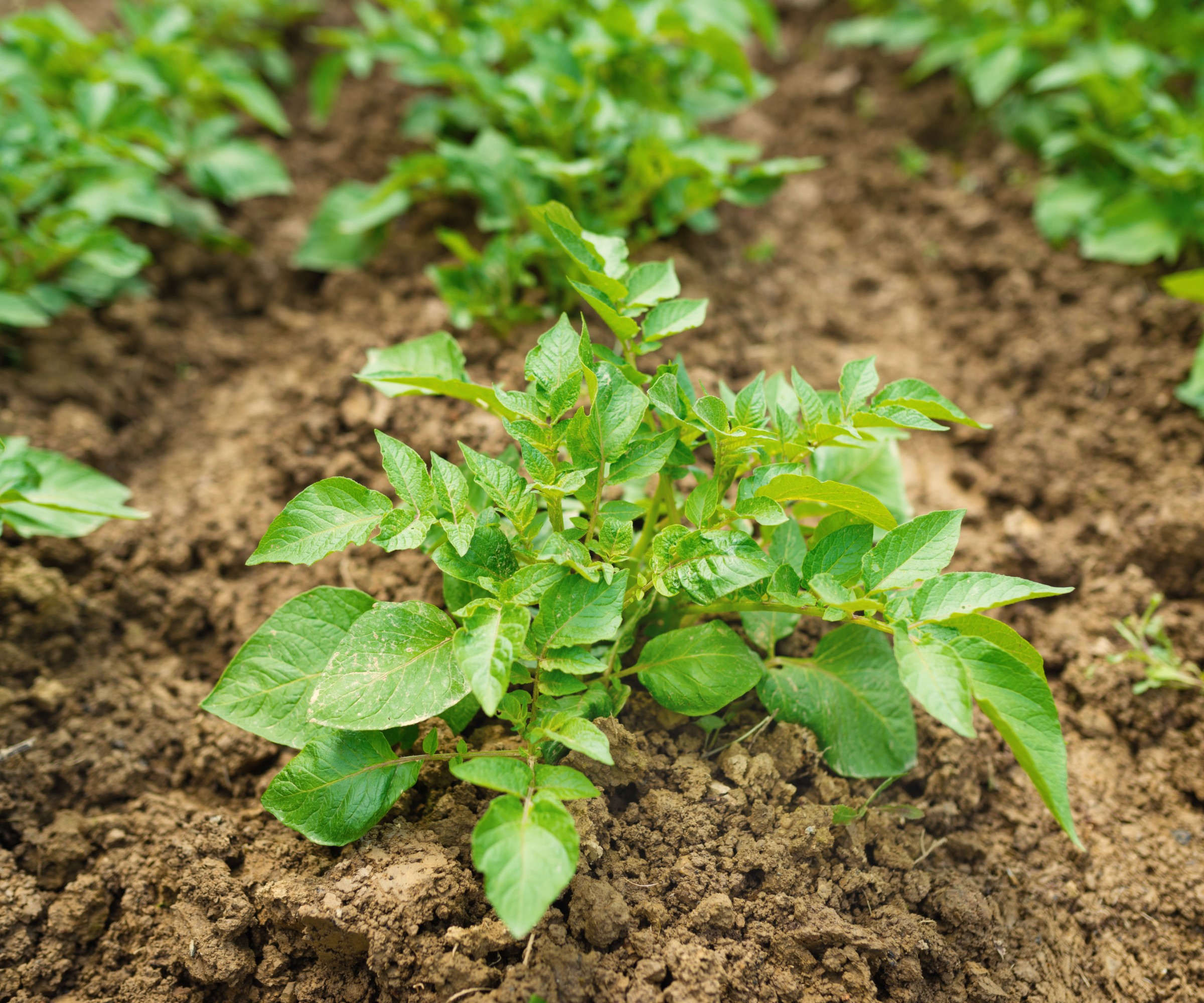
Consider adding fertilizer when hilling potatoes up
An important part of the fertilizing process for the crop occurs before the time comes to plant your potatoes. Traditionally, it has been a practice to apply manure to the planting site in the fall before the potatoes are then planted in the spring.
This both adds nutrients and organic matter into the soil and, by applying early, means a lot of the excess nitrogen in fresh manure will have dematerialized before the potatoes are planted.
This can help prevent a common potato growing problem caused by giving the plants too much nitrogen. An overabundance of nitrogen can promote lush foliage and see plants put all their energy into developing leaves rather than bulking tubers.
It is not essential to apply fertilizer that early, which is even way before you have started chitting your seed potatoes. The alternative is to apply a slow-release all-purpose fertilizer that is potassium-rich, such as Dr Earth All Purpose Fertilizer available on Amazon, to the growing site a week or two before you plant the potato tubers in spring. The addition of feed before planting is especially important when growing potatoes in containers.
The exact timings for planting will depend on the type of potatoes you are growing. For example, early season potatoes are planted in early spring while late season varieties are planted at the end of spring. Fertilizer is important for every type of potato that you can grow and a slow-release fertilizer just prior to planting should provide enough feed for the potato plants for at least the first month of growing.
Around that time, once plants get to around six inches tall, it is time to start hilling up plants. At this point in the plant’s life, Garry Coward-Williams, Editor of Amateur Gardening, recommends starting up a regular fertilizing regime, as this is when the potatoes need lots of moisture and nutrients to bulk up those tubers.
‘They will grow better with a little help from an occasional liquid plant food with high phosphorus and potassium levels,’ he adds. ‘Any of the tomato feeds are ideal for the job. I give my potato plants a generous watering with added liquid fertilizer every two weeks until they are ready to dig up.’
All watering and feeding of the plants should stop at least two weeks before you plan to harvest your potatoes. A sign of when to stop watering and fertilizing would be the potato foliage starting to turn yellow. You stop watering to prevent any fungal infections and also to make harvesting the tubers simpler.
How to pick the best potato fertilizer
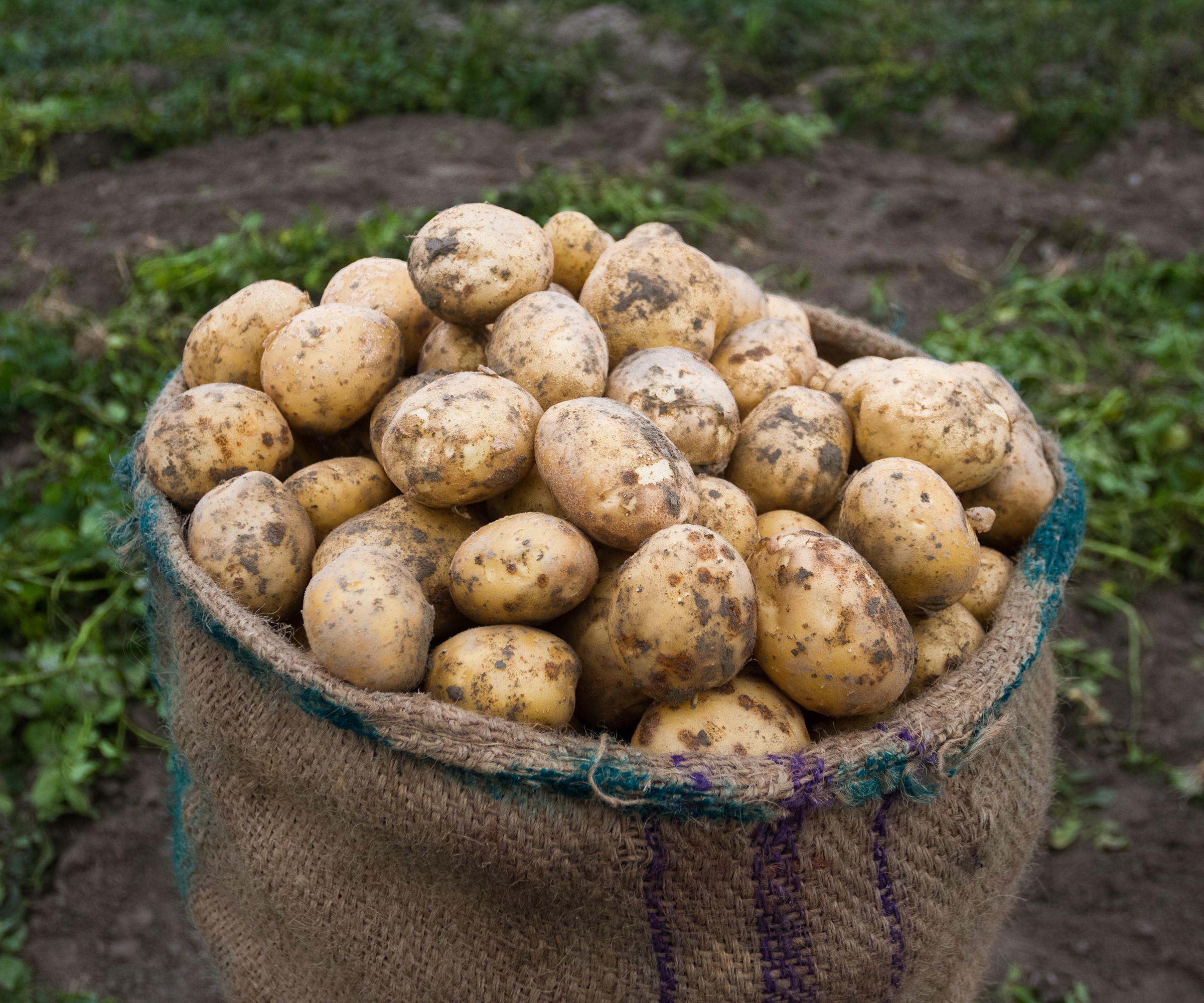
Fertilizing potato plants will give you bigger potatoes and more of them
The best fertilizer for potatoes will be one with higher levels of potassium and phosphorus than nitrogen.
A good ratio for a suitable potato fertilizer would have the second and third numbers up to twice the size of the first, for example, 5-10-10. However, a balanced conventional fertilizer like 10-12-12 or 10-10-10 will work if other options are not available.
Too much nitrogen will encourage the plant to grow lush foliage, whereas, as a root vegetable, it needs potassium and phosphorus to develop and grow tubers. It is also thought that too much nitrogen can make the potato susceptible to diseases, including potato blight.
There is a range of options for organic fertilizers for potatoes, including the likes of bone meal, seaweed, and wood ash, while you can get specially formulated fertilizers for growing potatoes.
Fertilizers often come in a slow-release granular form that is traditionally added by creating shallow trenches alongside the crops in which you scatter the feed and cover it with soil.
Others are water-soluble, and often these are quicker to release nutrients. With such fertilizers, you mix the feed in a watering can and apply it to the crop, taking care to avoid wetting the foliage as much as possible.
Shop fertilizer for potatoes
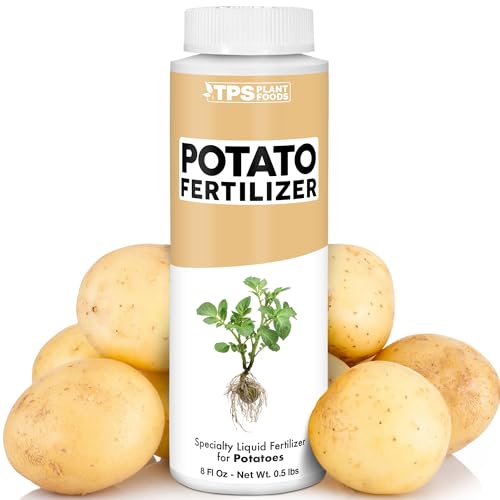
A liquid fertilizer with an NPK of 3-3.6-5.1, specially formulated for growing potatoes. Simply mix it with water and apply it to your potatoes either when watering plants or as a foliar spray
FAQs
Can I use tomato feed on potatoes?
Tomato fertilizers are ideal for use on potatoes as those sold to encourage flowering and fruiting when growing tomatoes are higher in potassium and phosphorus than nitrogen. A typical ratio of NPK for tomato fertilizers has the second two numbers higher than the first.
Anne Swithinbank, expert for Amateur Gardening, claims potatoes ‘respond well’ to such high potassium fertilizers and that will ‘encourage higher yields’ from your plants. An example of such a tomato feed is the Jack's Classic Tomato Feed available on Amazon.
Do potatoes like manure?
The addition of manure to the planting site is a traditional way of fertilizing potatoes. The addition of manure or homemade compost to the trench in the months before planting your potatoes will provide the crop with the nutrients for strong growth.
Fresh manure has the potential to burn roots due to its high levels of nutrients and salts and it can also make the crop more susceptible to diseases, including scab. Therefore, fresh manure should not be added close to the planting date or after the potatoes have been planted.
It is worthwhile taking the time to feed crops now that you understand how to fertilize potatoes. Fertilizing is a very important part of growing potatoes, and it will reward you with bigger potatoes.
Look for fertilizers with high phosphorus and potassium levels as they will encourage strong growth of tubers during the important stage of their season. You will be thankful you fed your plants come harvest time.
Sign up to the Homes & Gardens newsletter
Design expertise in your inbox – from inspiring decorating ideas and beautiful celebrity homes to practical gardening advice and shopping round-ups.

Drew’s passion for gardening started with growing vegetables and salad in raised beds in a small urban terrace garden. He has worked as a professional gardener in historic gardens and specialises in growing vegetables, fruit, herbs, and cut flowers as a kitchen gardener. That passion for growing extends to being an allotmenteer, garden blogger, and producing how-to gardening guides for websites. Drew was shortlisted for the New Talent of the Year award at the 2023 Garden Media Guild Awards.
You must confirm your public display name before commenting
Please logout and then login again, you will then be prompted to enter your display name.
-
 The 5 worst things you can do to your fridge – these will drive up energy costs and result in pricey and regrettable repairs
The 5 worst things you can do to your fridge – these will drive up energy costs and result in pricey and regrettable repairsIt's crucial to swerve these blunders, appliance experts warn
By Ottilie Blackhall Published
-
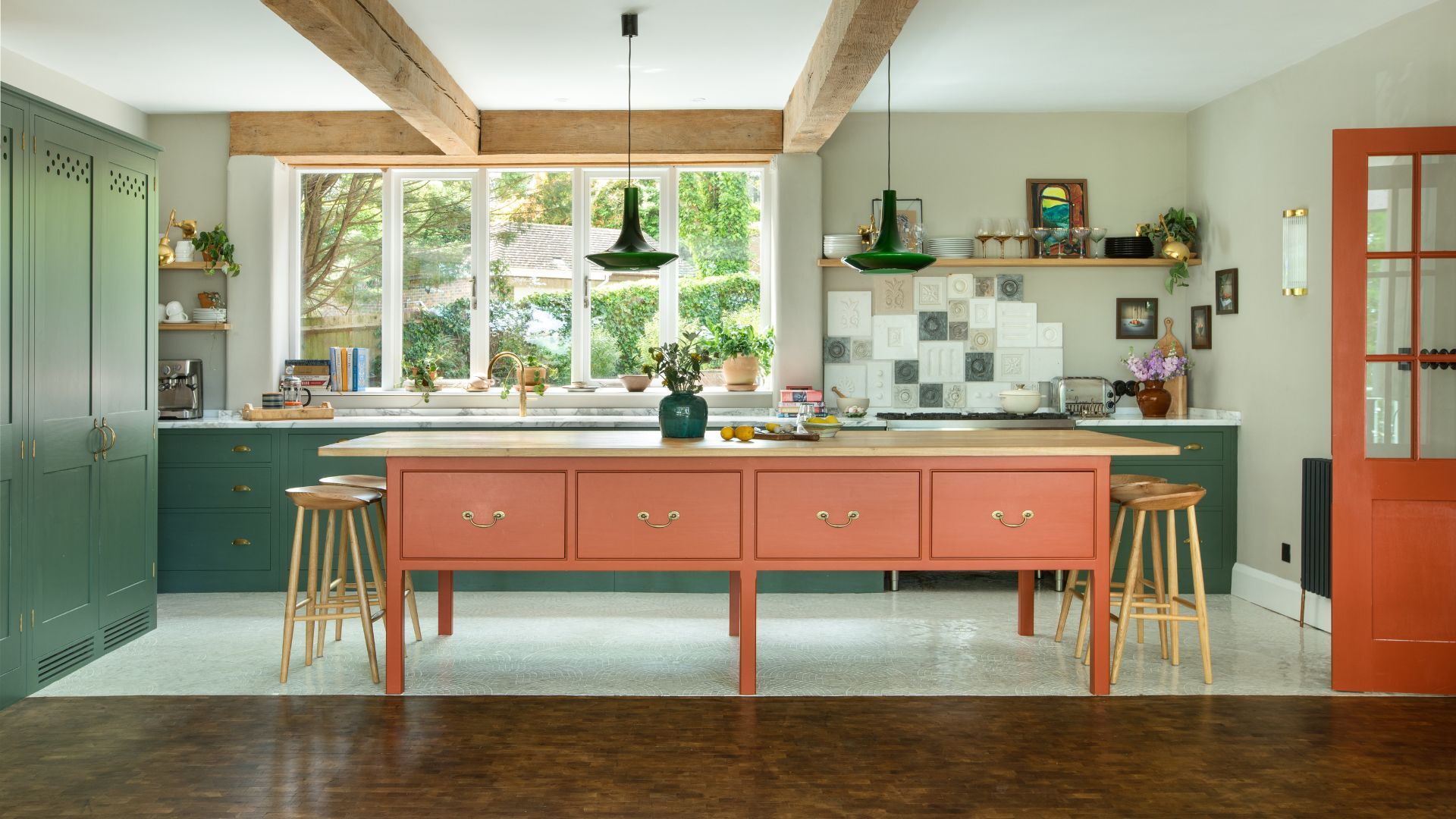 Orange and green is the bold color pairing quietly transforming homes in 2025 – here's 4 reasons why
Orange and green is the bold color pairing quietly transforming homes in 2025 – here's 4 reasons whyInterior designers are making the orange and green combination work wonders – this is how you can too
By Sophia Pouget de St Victor Published

